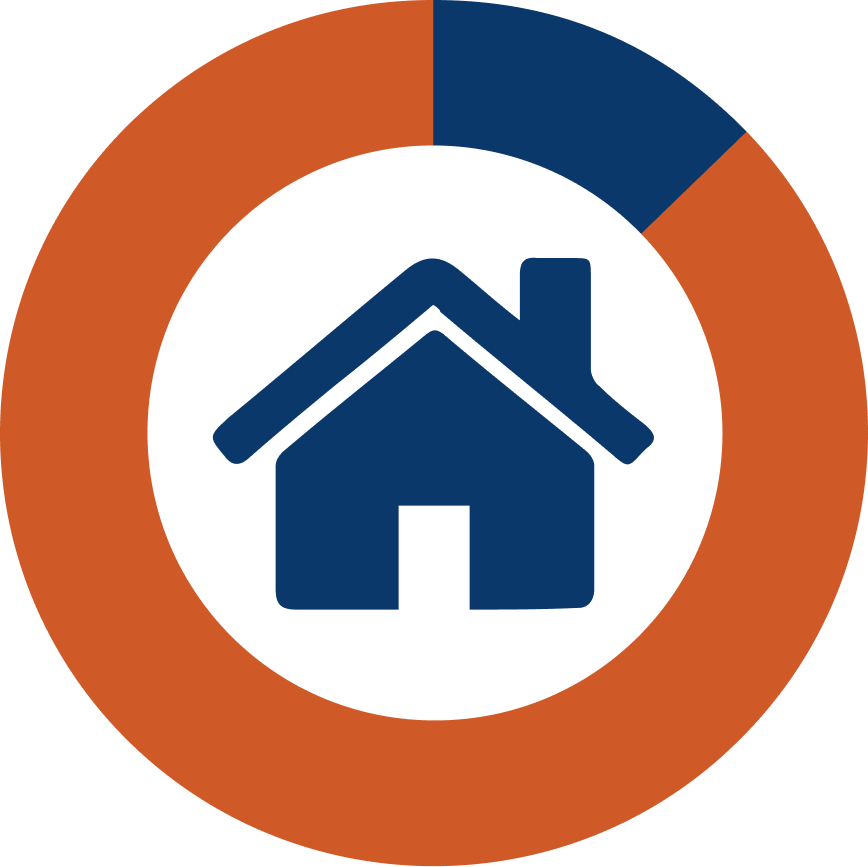A Transforming Region
In the face of steady growth and increased traffic congestion, it's clear that action must be taken to preserve the quality of life in the Lowcountry. Lowcountry Rapid Transit is more than just a transit system: this 21.5-mile project will transform the infrastructure in our region to provide better connectivity for transit riders, bicyclists, walkers and drivers. LCRT is a modern transportation system that will connect communities in our region like never before and will be a catalyst for economic growth and equitable prosperity throughout the area.
Successful Transit Oriented Development in Bus Rapid Transit Corridors is Driven by Three Factors:
Government Support
A regulatory framework and public financing incentives to encourage transit oriented development.
Land Potential
Real estate market potential and land availability for development.
Transit Quality
Speed, reliability and quality of transit.
The Region Today
The Lowcountry Rapid Transit corridor will inherently capture 23% of the projected regional growth. This corridor is prime for development and redevelopment, housing, employment and entertainment areas. Now is the time to strategically develop policies and frameworks to guide this development and focus it in this corridor of opportunity, while also enhancing quality of life for current residents.
Population in the Region
2020
835,695
Projected 2040
1,398,124
67.3% growth over 20 yearsEmployment in the Region
2020
400,449
Projected 2040
607,633
51.7% growth over 20 yearsEnhanced Demand
The introduction of bus rapid transit to the region will create a demand for residential and employment opportunities within the corridor.
The projected population and employment growth of the region, along with the large number of people commuting to the corridor for work, indicates an increasing demand for additional housing opportunities closer to employment centers.
13,900 Work & Live in the Corridor
92,500 people work in corridor, & live outside the corridor
Of those who WORK in the corridor:- 13% also live in the corridor
- 87% live outside the corridor
25,700 people live in corridor, & work outside the corridor
Of those who LIVE in the corridor:- 35% also work in the corridor
- 65% work outside the corridor
Land Use Potential & Demand Considerations
- Residential
- Retail
- Office
- Hospitality
- Industrial
Trends
Homeownership Rate
The homeownership rate is projected to decline, resulting in higher demand for apartments
Household Change by Age
Younger and older populations prefer smaller dwellings and more connected communities
43,000 new residential units projected for the corridor by 2040, an estimated 20% of the overall regional growth. The majority of units are expected to be multi-family.
Opportunities for Growth Along the LCRT Corridor
- LCRT Corridor
- Known Developments
- 1/2 Mile Station Area
- Potential Station
- Key Location

Click on a key location on the map for more information.
Scroll horizontally to view more
Emerging Commercial Downtown Summerville
- Rapid residential development and existing retail undersupply increases retail development opportunities.
- Historic town center has regional tourism and entertainment draw. Emerging opportunity for a new office cluster.
- Expansion of downtown Summerville, northeast of railroad tracks - continuing the walkable environment and enhancing small-town attraction for tourists.
Transformation from Rural Exchange Park / County Fairground
- Currently rural character with slower growth than rest of corridor.
- Many greenfield sites suggest future growth as more development gravitates to this subarea.
- Predominately opportunity for lower density residential development with relatively higher density near stations.
Transformation from Rural Ingleside
- Currently rural character with slower growth than rest of corridor.
- Many greenfield sites suggest future growth as more development gravitates to this subarea.
- Predominately opportunity for lower density residential development with relatively higher density near stations.
Evolving Retail Northwoods Mall
- Northwoods Mall and adjacent retail centers currently form the largest retail cluster in the region.
- As retail evolves this area, it could transition from a suburban big box environment to a mixed-use hub incorporating residential uses and healthcare, educational and institutional anchors.
Enhancing Employment Airport / Boeing
- Expected expansion of one of the largest employment clusters in the region. Zone likely to experience a high concentration of office and hospitality development.
- Opportunity to provide residential and supporting retail around stations and closer to job centers to reduce commute times and create a stronger live work play environment.
Preserving Affordability Reynolds Avenue
- Need to preserve naturally occurring affordable housing while introducing new affordably priced homes to create inclusive mixed-income neighborhoods.
- Leverage transit investment to strengthen existing communities.
Innovation Magnolia
- Emerging innovation corridor as start-up companies and residential developments continue to co-locate in this area close to the Peninsula with significant land availability.
- Large publicly owned sites create opportunity for master-planned growth.
Amplifying Historic Assets Historic District
- An urban fabric ideal for transit. The region's destination for tourism, healthcare, education and retail.
- Opportunities for infill redevelopment of older industrial and strip commercial to new mixed-use formats that complement existing character.
Take Control of the Future
The policies we put in place today will decide what our community looks like tomorrow. Decisions made as a result of this project will impact various aspects of daily life including:
-
Street Networks
-
Parking
-
Stormwater
-
Building Regulations
-
Affordable Housing
-
Land use
-
Park and Rides
-
Food Deserts
-
Mobility
-
Zoning




 Of those who WORK in the corridor:
Of those who WORK in the corridor:
 Of those who LIVE in the corridor:
Of those who LIVE in the corridor:







